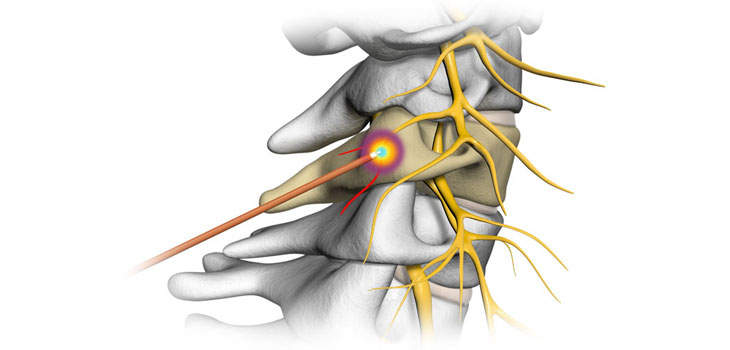TREATMENT
DETAILS

Facet joint injections and Medial branch RF ablation
|
What is a Facet Joint pain syndrome? Facet joints are joints between two vertebral bones. They are arranged in the back part of your spine from the neck all the way down to your low back. They can be painful due to bad posture, "whiplash" injuries of the neck, arthritis or degeneration in the low back. These joints may cause pain in and around the spine and can markedly limit how you use your neck or back. When facet joints are painful, it can be difficult to bend the spine backward / sideways. Each facet joint is served by medial branch nerves, and if these nerves are blocked with local anesthetic, the pain from the joints will stop. These nerves do not serve any other function in the body. Blocking it by local anaesthetic or radiofrequency current is absolutely safe method of relieving facet joint pain How to diagnose if facet joint is cause of your back or neck pain? Under X-ray control, a thin needle is inserted in the facet joint or near the medial branch which supplies sensation to facet joint. A small amount of local anaesthetic is injected. This is the only test to tell the doctor the pain is coming from facet joint. Once test is positive (i.e. you get more than 50%pain relief), radiofrequency ablation of medial branches will provide your lasting pain relief.
What next if my diagnostic test is positive?
Once RF provides pain relief the next steps are
How long the effect lasts? The coagulatednerves grows again and usually it takes 6m to 18 months for sensation to come back. Some patients do well even after 18 months. What if My pain comes back after few months? The best thing is about RF ablation is that it can be repeated after the pain comes back. |